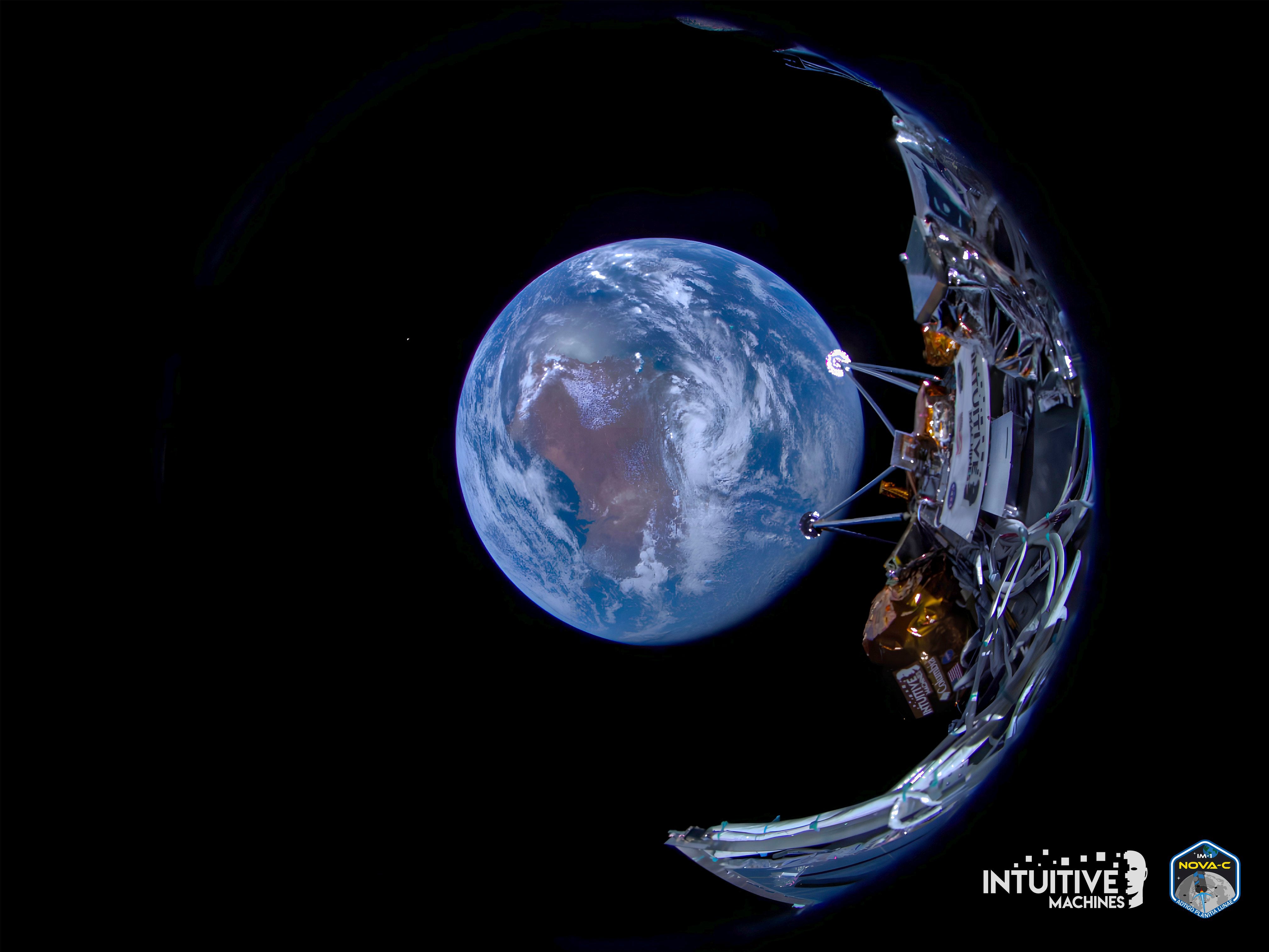First privately owned spacecraft lands successfully on the Moon
The Nova-C Odysseus spacecraft landed on the Moon’s south pole region
Your support helps us to tell the story
From reproductive rights to climate change to Big Tech, The Independent is on the ground when the story is developing. Whether it's investigating the financials of Elon Musk's pro-Trump PAC or producing our latest documentary, 'The A Word', which shines a light on the American women fighting for reproductive rights, we know how important it is to parse out the facts from the messaging.
At such a critical moment in US history, we need reporters on the ground. Your donation allows us to keep sending journalists to speak to both sides of the story.
The Independent is trusted by Americans across the entire political spectrum. And unlike many other quality news outlets, we choose not to lock Americans out of our reporting and analysis with paywalls. We believe quality journalism should be available to everyone, paid for by those who can afford it.
Your support makes all the difference.A Texas-based flight company has made history after becoming the first to land a privately owned spacecraft on the Moon.
The Nova-C Odysseus lander, built by Texas-based spaceflight company Intuitive Machines (IM), landed on the Moon’s south pole region on Thursday. It was aiming to land on Malapert A, a crater 186 miles from the Moon’s south pole.
Odysseus is also the first US Moon landing since the final mission of the Apollo programme, Apollo 17, more than 50 years ago.
The “nailbiting” moment was confirmed from the control room of Intuitive Machines just before 6.40pm eastern time, prompting cheers and celebration. Roughly an hour before landing, the craft suffered a problem with laser instruments designed to help it assess the lunar terrain and find a safe and hazard-free spot to touch down.
The laser rangefinders aboard Odysseus were not operable but sensors on one of the Nasa science instruments aboard the lander were repurposed to solve the issue.

“I know this was a nail-biter, but we are on the surface, and we are transmitting,” Intuitive Machines CEO Steve Altemus annouced on the live webcast. “Welcome to the moon.”
“Odysseus has a new home.”
According to Nasa, the official landing time of the craft was 6.23pm ET, one minute prior to the orignal predicted land time.
“Your order was delivered… to the Moon!” the organisation wrote on X. “These instruments will prepare us for future human exploration of the Moon under #Artemis.”
The spacecraft blasted off last week from Cape Canaveral in Florida on top of a Falcon 9 rocket made by Elon Musk’s company SpaceX, and has performed a series of manoeuvres during its 620,000-mile journey.
Odysseus is a hexagonal cylinder about 13ft (4m) tall and 5ft (1.57m) wide and weighs 1,488lb (675kg), about the size of a British phone box.
It is part of Nasa’s Commercial Lunar Payload Services initiative, which aims to involve commercial companies in the exploration of the Moon and could pave the way for astronauts to land on the Moon as part of Nasa’s Artemis programme.

Besides Nasa’s tech and navigation experiments, Intuitive Machines sold space on the lander to Columbia Sportswear to fly its newest insulating jacket fabric; sculptor Jeff Koons for 125 mini moon figurines; and Embry-Riddle Aeronautical University for a set of cameras to capture pictures of the descending lander.
The pole is thought to contain water ice, which would be a valuable resource for future human exploration. Now that it is safely on the surface, Odysseus will operate for roughly a week before the lunar night sets on the south pole.
The historic event comes a month after another US spacecraft, Peregrine, failed to touch down after a fuel leak. Prior to the Intuituitive Machines mission, controlled Moon landings have only been performed by government agencies including the US, Soviet Union, China, India and Japan.

In a previous video describing the spacecraft’s flight path, Intuitive Machines Chief Technology Officer Tim Crain explained how the spacecraft had prepared for its descent to the lunar surface.
Odysseus needed to complete a burn manoeuvre on the far side of the moon, where the moon itself blocks direct communication with mission controllers on Earth.
“Once we get around the moon, we have on the day side of the moon the sun heating us from one side and reflected infrared light off the bright moon warming us on the other,” Mr Crain said. “Then we plunge into night and now we’re cold on both sides. It’s very tough.”

Join our commenting forum
Join thought-provoking conversations, follow other Independent readers and see their replies
Comments